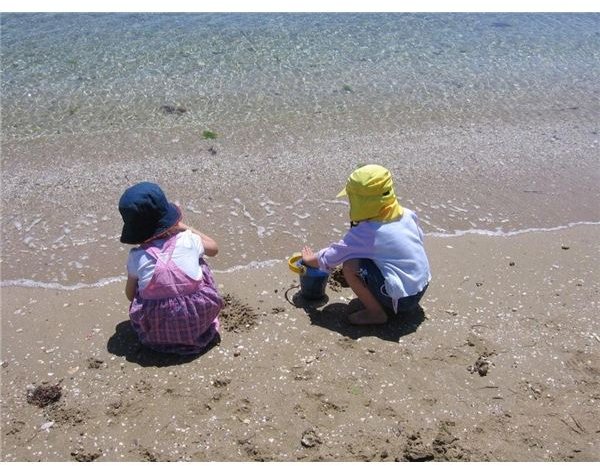Group Ice Breaker Activities: KIndergarten Curriculum for English
From Little Things…The Small Group Introduction Approach
Remember that old saying about ‘from little things, big things grow?’ This is true also of children at kindergarten level. If we think for a moment about some of the fundamentals of the kindergarten curriculum it is vital that areas such as:
- self esteem
- interpersonal communication
- fine motor skills
- gross motor skills
- social interactions
- communication with known adults
are all covered. But it pays to start off small, in a way that will guarantee success for our new small people in kindergarten. So begin your program by inviting a parent or care giver to join you as teacher in a fun, small group setting with only a limited number of children attending for a short period. This gives everyone the chance to get to know each other at least in visual recognition terms in a non threatening way.
Side by Side
Remember that at the early kindergarten level, English content is not about teaching children to socialise and play directly with each other. This will come down the track as children become older and move on developmentally. Intitially it is all about side by side play and interacitons, so group ice breaker activities tend to be all about interacting with small groups rather than larger ones. Set up stations and table top activities around the room which promote small group interactions. This encourages:
- verbal communication
- awareness of body language
- turn taking
- acceptance of rules
Keep the time frame to an achievable level so children do not become bored or frustrated with the activities.
Learning Alongside You…
Story Time
Story time is a favourite in the kindergarten curriculum for English, but when it comes to implementation it can be a disaster! To promote group ice breaker activities through the medium of story time, try reading the story mid way through the session rather than at the end. This sets the activity up for success rather than failure, as children are less fatigued and more focussed. They are more likely to sit as a group for a period without disrputive behaviour making your lovely planned story into a disaster zone.
The Name of the Game
Funnily enough at this level, children are not particularly focussed on names. It matters not to a three year old what the name of the child next to them is. Chances are even if they learn it for a moment it will be forgotten minutes later. Children at this age are simply not ready for the component of the English program where we expect appropriate ‘adult style’ interactions. Asking children to use the name of another child in a social exchange is expecting more than they are able to give and will often lead to bevvies of small folk charging around your kindergarten room quizzing everyone they meet with a demanding ‘What’s your name?’ Although with this statement we can certainly tick the ‘appropriate greeting’ box, it is not until you see the process in action that you realise it is not really what ‘getting to know you’ and ‘group ice breaker activities’ is all about.
Fruit Salad Friendship Recipe
The last of the group ice breaker activities for your kindergarten curriculum in English is called ‘Fruit Salad Friendship Recipe’. It can be used to teach:
- social interactions and turn taking with a group who have known each other for a short period
- turn taking
- listening to and following auditory instructions
- using visual cues
- early reading skills
Simply provide a ‘recipe’ for fruit salad using whatever fruits are seasonal. Assign each fruit with a characteristic, such as ‘pears for playing together’. Create your own simple recipe along this theme, focussing on friendship, social and communication skills areas. Then take a photo of your group preparing the fruit salad for display in the room. As a last step, encourage your group to use their social skills to share the serving and eating of the fruit salad while sitting together at a table.
